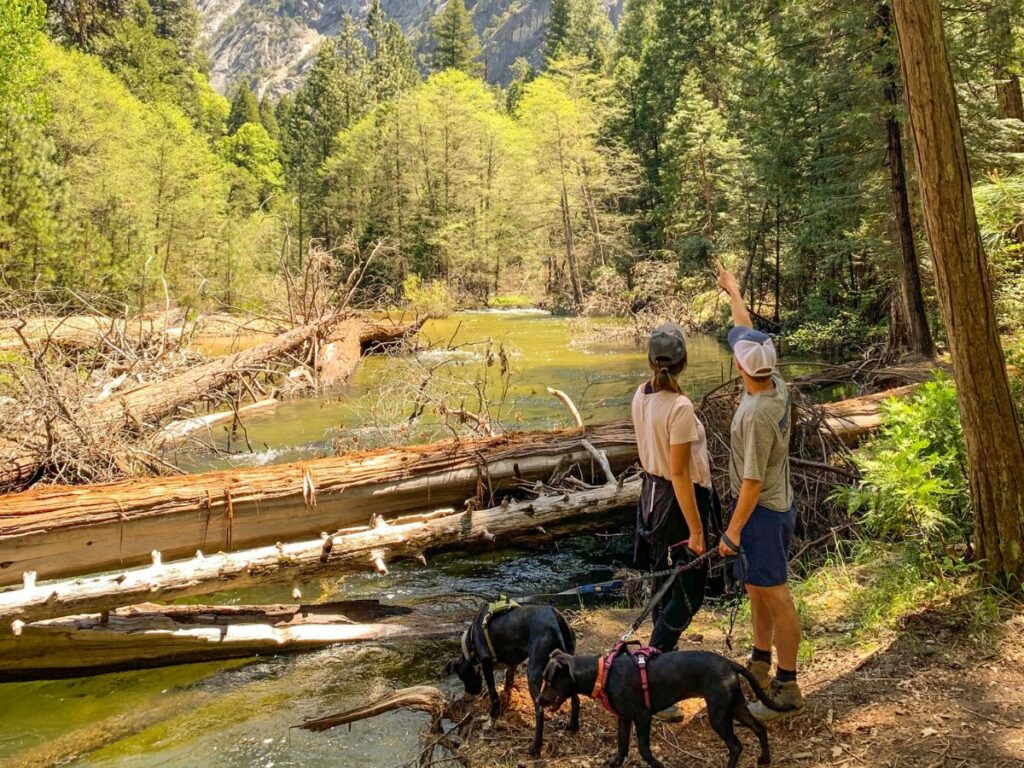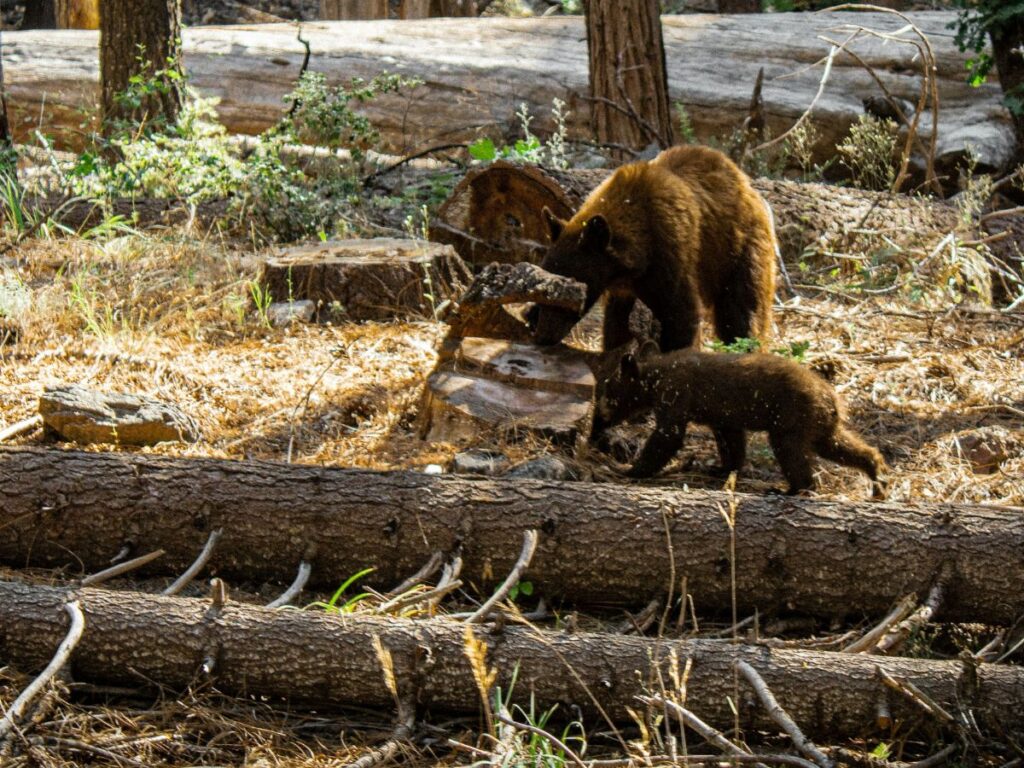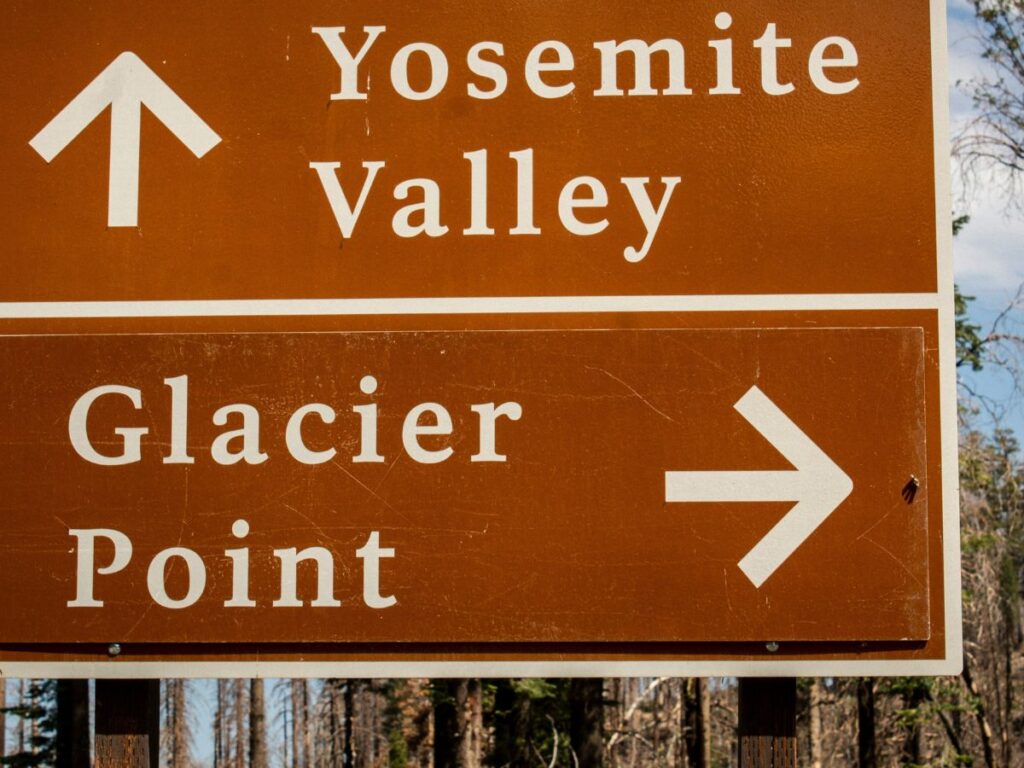Embark on an unforgettable journey through the heart of Yosemite National Park by exploring the Lower Yosemite Fall Trail, a path that leads adventurers directly to the base of one of the most breathtaking waterfalls in North America. This easily accessible trail offers an up-close experience with the majestic Yosemite Falls, allowing you to feel the mist on your face and hear the thunderous roar of water like never before. Whether you’re an avid hiker or a family looking for a memorable day out, hiking Lower Yosemite Fall Trail promises an encounter with nature’s grandeur that is both awe-inspiring and rejuvenating. With every step, the trail unveils stunning views and photographic moments, making it a must-visit destination for anyone captivated by the beauty of the natural world. Join us as we guide you through everything you need to know about the Lower Yosemite Fall Trail, from the trailhead to the waterfall’s base, ensuring your adventure is as enchanting as the landscape itself.
Getting to Know Lower Yosemite Fall Trail
The Lower Yosemite Fall Trail offers an unparalleled opportunity to experience the majesty of Yosemite National Park’s iconic waterfalls up close. This trail, known for its breathtaking views and accessibility, is a favorite among park visitors of all ages and skill levels. Hiking Lower Yosemite Fall Trail is more than just a walk in the park; it’s an opportunity to connect with nature, witness the power of Yosemite Falls, and create lasting memories in one of America’s most beloved national parks. Whether you’re capturing the perfect photo or simply soaking in the views, this trail offers a unique blend of ease, beauty, and inspiration.
Length of Lower Yosemite Fall Trail: The trail presents a comfortable 1-mile (1.6 km) loop that is perfect for a quick yet unforgettable adventure in the heart of Yosemite. This makes it an ideal choice for those looking to experience the beauty of the park without embarking on a strenuous hike.
Lower Yosemite Fall Trail Elevation: With a minimal elevation gain of only about 50 feet (15 meters), the trail is relatively flat, making it accessible to hikers of all abilities. This gentle climb allows visitors to enjoy the stunning scenery without the exertion required by more challenging trails.
Difficulty Level: The Lower Yosemite Fall Trail is classified as an easy hike. Its well-maintained path and minimal elevation gain make it suitable for families, casual hikers, and those looking for a leisurely walk amidst nature’s splendor. The trail’s accessibility ensures that everyone, regardless of hiking experience, can enjoy the magnificent views of Yosemite Falls without the need for specialized hiking equipment or advanced preparation.

How to Reach the Trailhead
Finding your way to the Lower Yosemite Fall Trailhead is straightforward, whether you’re a seasoned visitor to Yosemite National Park or exploring its wonders for the first time. This trail offers not just an easy hike but also an easy start, making it one of the most accessible and rewarding experiences in the park.
Directions to Lower Yosemite Fall Trail: The trailhead is conveniently located near Yosemite Valley Lodge, in the heart of Yosemite Valley. For those arriving by car, parking is available in the Yosemite Valley Lodge parking lot, though it can fill up quickly during peak tourist seasons. From there, follow the signs pointing towards the Lower Yosemite Fall Trail, which is a short walk away. If you’re using the Yosemite Shuttle, take the shuttle to stop #6, which is the closest stop to the trailhead. The shuttle service is a convenient way to navigate around the park and is highly recommended during busy times to avoid parking hassles.
Lower Yosemite Fall Trailhead: The trailhead itself is well-marked and features informational panels that provide insights into what you’re about to experience on the trail. Look for the large wooden signboard that marks the beginning of the Lower Yosemite Fall Trail. This sign not only signifies the start of your journey to the falls but also offers a map and educational information about the area. The path begins with a well-paved route, flanked by towering trees and the occasional glimpse of the upper falls in the distance, guiding you toward the main attraction, the Lower Yosemite Fall.
What to Expect When Hiking Lower Yosemite Fall Trail
Hiking the Lower Yosemite Fall Trail is an experience filled with awe-inspiring views, encounters with nature, and the serene beauty of Yosemite National Park’s diverse landscape. As you prepare to embark on this journey, here’s what you can expect along the way:
Scenic Points: The Lower Yosemite Fall Trail is renowned for its stunning scenic points and unparalleled photo opportunities. As you meander along the trail, you’ll be greeted by the awe-inspiring sight of Yosemite Falls, one of the tallest waterfalls in North America. The trail offers several vantage points where hikers can capture the falls in all their glory—especially in the spring when the water flow is at its peak. The mist from the waterfall creates a rainbow under the right conditions, providing a magical backdrop for photographers and nature lovers. Additionally, the loop around the base of the falls gives you a chance to see the granite cliffs that tower over Yosemite Valley, creating a majestic landscape that is quintessentially Yosemite.
Wildlife and Nature: The trail is not just about the spectacular views; it’s also a journey through the rich biodiversity of Yosemite. Hikers may encounter a variety of wildlife, including squirrels, deer, and a wide array of bird species that call the park home. Please remember to observe wildlife from a distance and do not feed them to maintain the natural balance of the ecosystem. The area is also a showcase of the park’s flora, with towering pine trees, lush ferns, and, in the spring and early summer, a beautiful display of wildflowers. These elements combine to create a vivid tapestry of life that enhances the hiking experience.
Trail Conditions: The Lower Yosemite Fall Trail is well-maintained, making it accessible throughout the year. However, trail conditions can vary with the seasons. During the spring and early summer, when the snowmelt is at its peak, the trail can be wet from the spray of the falls, and hikers should wear waterproof footwear to stay dry. In the summer, the trail is usually dry, offering a pleasant hike with plenty of sun. Autumn brings a change in the landscape with the fall colors, while in winter, the trail might have snow and ice, necessitating caution and perhaps the use of traction devices on shoes. No matter the season, the Lower Yosemite Fall Trail offers a unique beauty and a memorable experience.
Hiking Lower Yosemite Fall Trail is an invitation to immerse yourself in the natural wonders of Yosemite National Park. With each step, you’re not just walking on a path but becoming part of a landscape that has inspired generations of nature lovers, artists, and adventurers.
Accommodations and Facilities
When planning your visit to the Lower Yosemite Fall Trail, considering where to stay and the facilities available can make your trip even more enjoyable. Yosemite National Park offers a range of accommodations and amenities to suit every visitor’s needs, ensuring your adventure is comfortable and convenient.
Nearby Accommodations: Yosemite National Park is home to various accommodations, from rustic campgrounds to cozy lodges, catering to different preferences and budgets. For those wishing to stay close to the Lower Yosemite Fall Trail, the Yosemite Valley Lodge is a prime choice, located just a short walk from the trailhead. This lodge offers comfortable rooms with stunning views of the surrounding scenery, including Yosemite Falls. For a more luxurious stay, The Ahwahnee Hotel provides elegance and comfort amidst the park’s natural beauty. If you prefer to be closer to nature, several campgrounds are available within Yosemite Valley and its vicinity. The North Pines, Lower Pines, and Upper Pines campgrounds offer a classic camping experience surrounded by towering trees and breathtaking landscapes. Reservations are highly recommended, especially during peak seasons, to secure your spot in these popular campgrounds.
Facilities on the Trail: The Lower Yosemite Fall Trail is designed to be accessible and enjoyable for all visitors. At the trailhead, you’ll find restrooms and a drinking water station, allowing you to refill your bottles before starting your hike. While there are no picnic areas directly on the trail, numerous spots near the trailhead and in surrounding areas provide perfect settings for a picnic with a view. Additionally, informative signs along the trail offer insights into the natural and cultural history of Yosemite Falls and the surrounding valley, enhancing your hiking experience.
It’s important to note that while the trail itself is well-maintained, there are no food services directly on the Lower Yosemite Fall Trail. Visitors are encouraged to bring their snacks or plan to eat at one of the dining facilities within Yosemite Valley, such as those at Yosemite Valley Lodge or The Ahwahnee, which offer a range of dining options from casual to fine dining.
Whether you’re looking for a place to rest after a day of exploring or need to refresh during your hike, Yosemite National Park’s accommodations and facilities ensure your visit to the Lower Yosemite Fall Trail is as comfortable as it is memorable.

Activities and Attractions
Exploring the Lower Yosemite Fall Trail is just the beginning of the adventure that awaits you in Yosemite National Park. The area around the trail is rich with activities and attractions, ensuring that your visit is filled with memorable experiences. Whether you’re interested in further exploration, learning, or simply soaking in the natural beauty, there’s something for everyone.
Additional Activities: Beyond hiking Lower Yosemite Fall Trail, the park offers a plethora of activities to enrich your stay. For those inspired to explore more, numerous other trails are accessible from Yosemite Valley, including the trail to Upper Yosemite Fall for a more challenging hike and a different perspective of the falls. For a less strenuous but equally rewarding experience, the Valley Loop Trail provides an extensive tour of Yosemite Valley’s landmarks. Yosemite is not just a haven for hikers; it’s a learning ground for nature lovers. The Yosemite Valley Visitor Center presents exhibits on the park’s geology, wildlife, and history, offering a deeper understanding of this unique ecosystem. Additionally, the park organizes educational programs and guided tours, ranging from ranger-led walks to photography workshops, allowing visitors to gain insights into the park’s natural and cultural heritage.
Best Time to Visit: The best time to hike the Lower Yosemite Fall Trail largely depends on what you want to experience. Spring (April to June) is arguably the most spectacular time to visit, as the melting snow feeds the falls, making them particularly powerful and photogenic. This season also sees the valley come alive with wildflowers, adding a burst of color to the landscape. Summer (July to September) offers warm weather and the full range of park activities, but it’s also the busiest time of the year. If you prefer a less crowded experience, consider visiting in the fall (October to November) when the crowds have thinned, and the changing leaves paint the valley in warm hues. Winter (December to March) presents a unique beauty, with snow-capped cliffs and the possibility of seeing the falls framed by ice, though some facilities and trails may be limited due to weather conditions.
Regardless of when you visit, hiking Lower Yosemite Fall Trail and exploring the surrounding attractions in Yosemite National Park offers an unparalleled opportunity to connect with nature and create lasting memories in one of America’s most iconic natural landscapes.
Safety and Preparation
Embarking on the Lower Yosemite Fall Trail is an exciting adventure that brings hikers up close with the natural beauty of Yosemite National Park. To ensure a safe and enjoyable experience, proper preparation and awareness of safety guidelines are essential. Here’s how to gear up and stay safe while exploring the trail and the broader park.
Gear and Supplies
Given the relatively easy nature and short distance of the Lower Yosemite Fall Trail, the gear and supplies needed are minimal, yet specific items can enhance your hiking experience:
Footwear: Comfortable, sturdy hiking shoes or boots with good grip are recommended, even for easy trails, to handle the occasional slippery sections, especially near the waterfall mist.
Water: Bring enough water to stay hydrated throughout your hike. A refillable water bottle can be topped up at the trailhead.
Snacks: Energy-boosting snacks like nuts, fruit, or granola bars are great for a quick break.
Sun Protection: Sunscreen, sunglasses, and a hat are advisable year-round to protect against the sun’s rays.
Clothing: Dress in layers, as temperatures can vary significantly between the trailhead and the falls, and weather can change quickly in Yosemite.
Camera or Smartphone: For capturing the stunning scenery and the moment you reach the falls. Ensure your phone is fully charged for pictures and emergencies.
Safety Tips
Hiking in Yosemite, including on the Lower Yosemite Fall Trail, is an unforgettable experience when done safely. Keep the following tips in mind:
Stay on the Trail: Protect the park and yourself by sticking to marked paths and viewing areas. The terrain off-trail can be dangerous and damaging to the environment.
Wildlife: Yosemite is home to diverse wildlife. Enjoy watching animals from a distance and do not attempt to feed or approach them.
Weather Awareness: Check the weather forecast before you head out. Be prepared for sudden changes in weather, which are common in mountainous areas.
Respect the Water: The beauty of Yosemite Falls is best enjoyed from a safe distance. Rocks near water can be slippery, and the water flow can be strong, especially in spring and early summer.
Emergency Preparedness: Know the basic steps to take in an emergency. Carry a small first aid kit, and ensure your phone is charged. Be aware of the location of the nearest ranger station.

Key Takeaways
- The Lower Yosemite Fall Trail is an easily accessible and family-friendly hike that offers breathtaking views of one of Yosemite National Park’s most famous waterfalls, making it perfect for visitors of all ages and skill levels.
- The trail is a 1-mile loop with a minimal elevation gain, classified as an easy hike. This allows for a leisurely exploration of the park’s natural beauty without requiring extensive hiking experience or equipment.
- The best time to hike the trail is in the spring when the waterfalls are at their most spectacular due to the snowmelt. However, the trail offers unique beauty and experiences throughout all seasons.
- Even though the hike is considered easy, visitors should come prepared with appropriate footwear, water, snacks, and sun protection to ensure a comfortable and safe hiking experience.
- Along the trail, hikers can enjoy the rich biodiversity of Yosemite, including a variety of wildlife and plant species, making it a great opportunity for nature observation and photography.
- Yosemite National Park offers various accommodations and facilities near the trailhead, including the Yosemite Valley Lodge, campgrounds, and visitor centers, catering to the needs of all visitors.
- Adhering to safety guidelines and being prepared for the trail conditions ensures a safe and enjoyable experience for everyone. Hikers are reminded to stay on the trail, respect wildlife, and be mindful of the weather and terrain conditions.
FAQs
- What is the length of the Lower Yosemite Fall Trail?
The trail is a 1-mile loop, making it an easy hike for visitors. - What’s the best time of year to hike the Lower Yosemite Fall Trail?
Spring is ideal for seeing the waterfalls at their fullest, but the trail offers unique experiences throughout all seasons. - Are there any accommodations near the Lower Yosemite Fall Trail?
Yes, accommodations range from campgrounds to lodges like Yosemite Valley Lodge. - Can I see wildlife while hiking the Lower Yosemite Fall Trail?
Yes, the area is home to diverse wildlife, including deer, squirrels, and various bird species. - How much elevation gain is there on the Lower Yosemite Fall Trail?
The trail has a minimal elevation gain of about 50 feet. - Are there restrooms available at the Lower Yosemite Fall Trail?
Yes, restrooms are available at the trailhead. - Is the Lower Yosemite Fall Trail suitable for children?
Absolutely, its easy difficulty level makes it a great choice for families. - Can I access the Lower Yosemite Fall Trail by public transport?
Yes, the Yosemite Shuttle has stops near the trailhead. - What should I do if I encounter wildlife on the trail?
Observe from a distance and do not feed or approach the animals. - What are the trail conditions like in winter?
The trail can be snowy or icy in winter; traction devices for shoes are recommended. - Can I picnic on the Lower Yosemite Fall Trail?
While there are no picnic areas on the trail itself, there are numerous spots near the trailhead perfect for picnicking.
